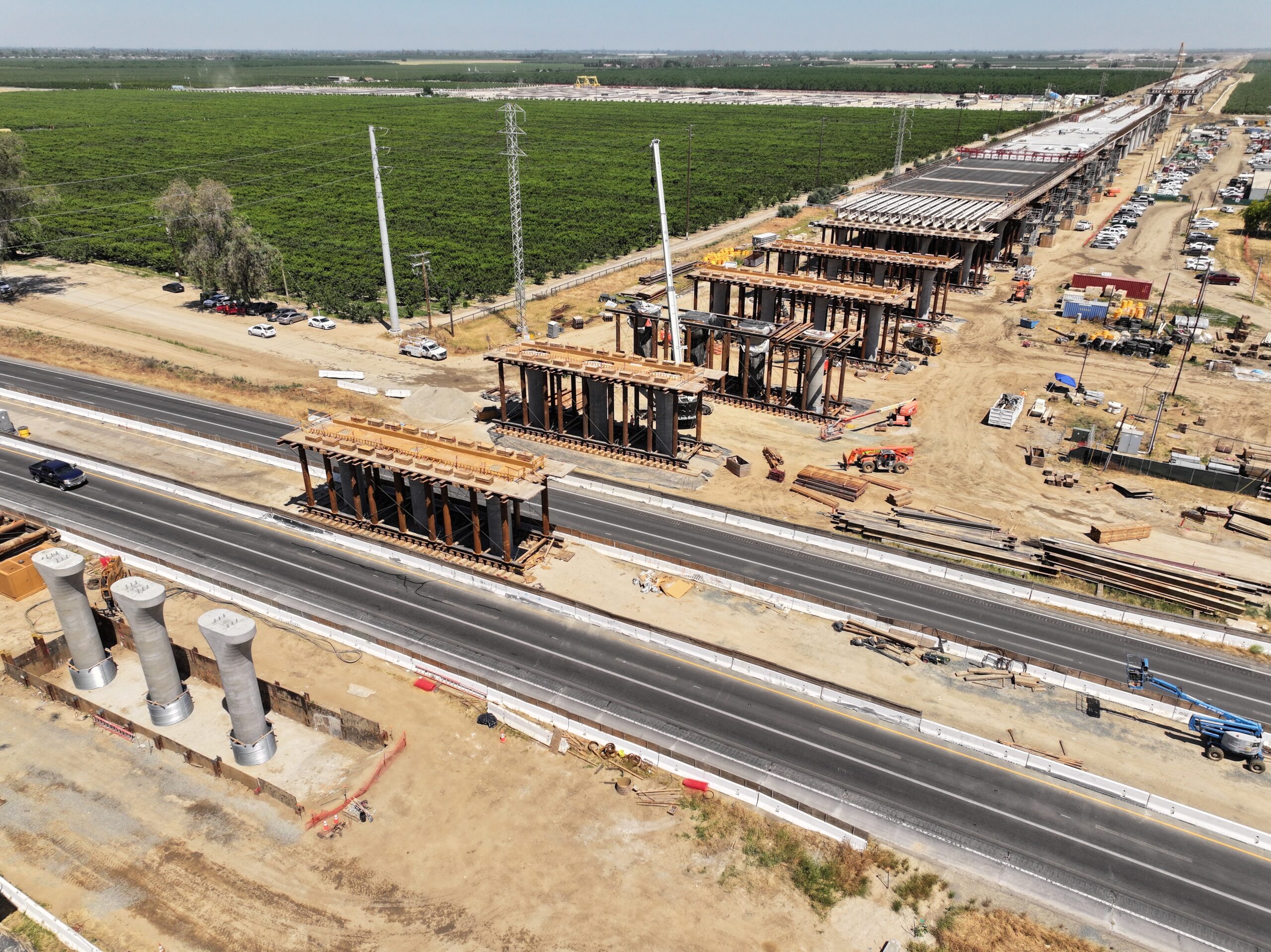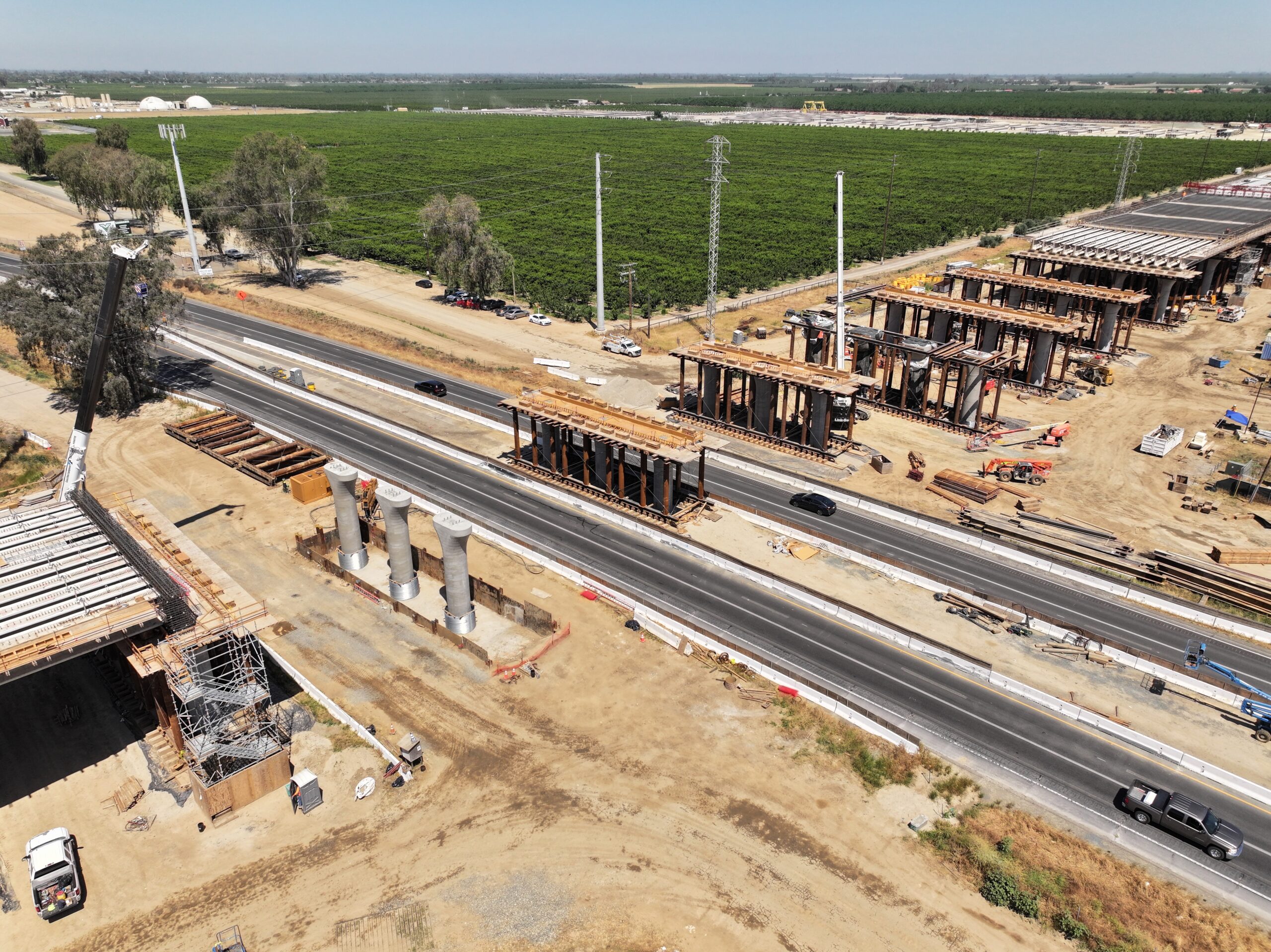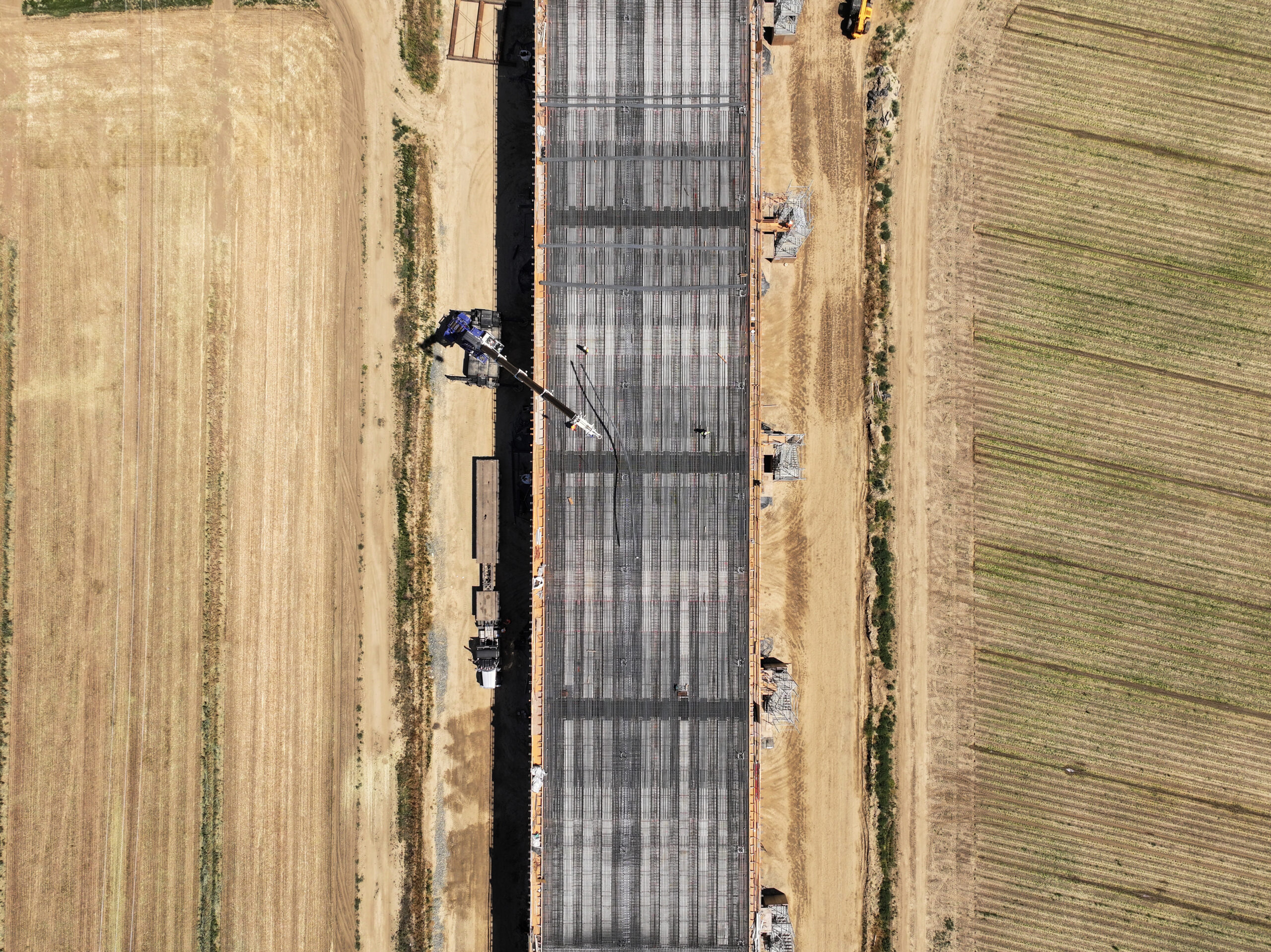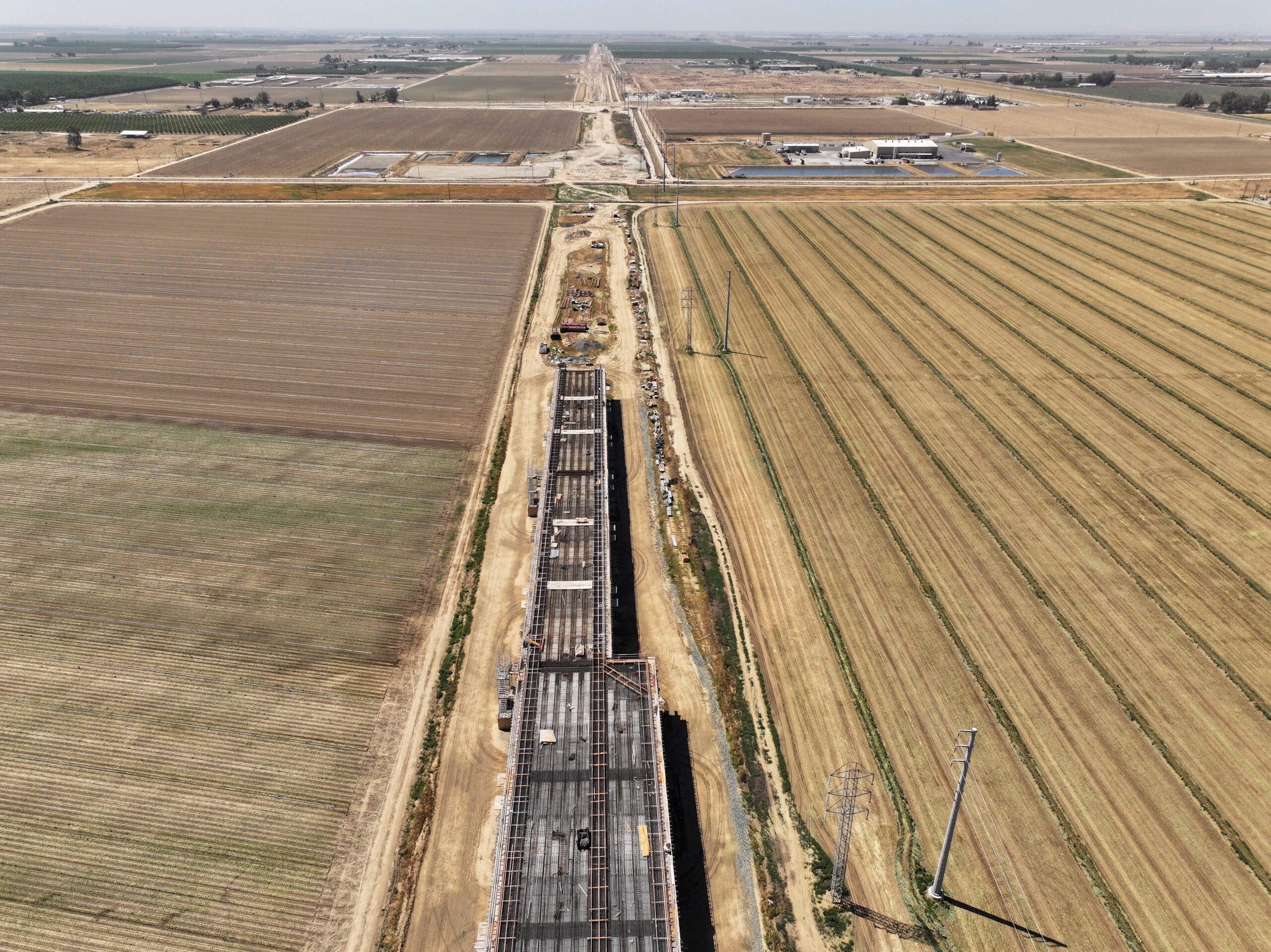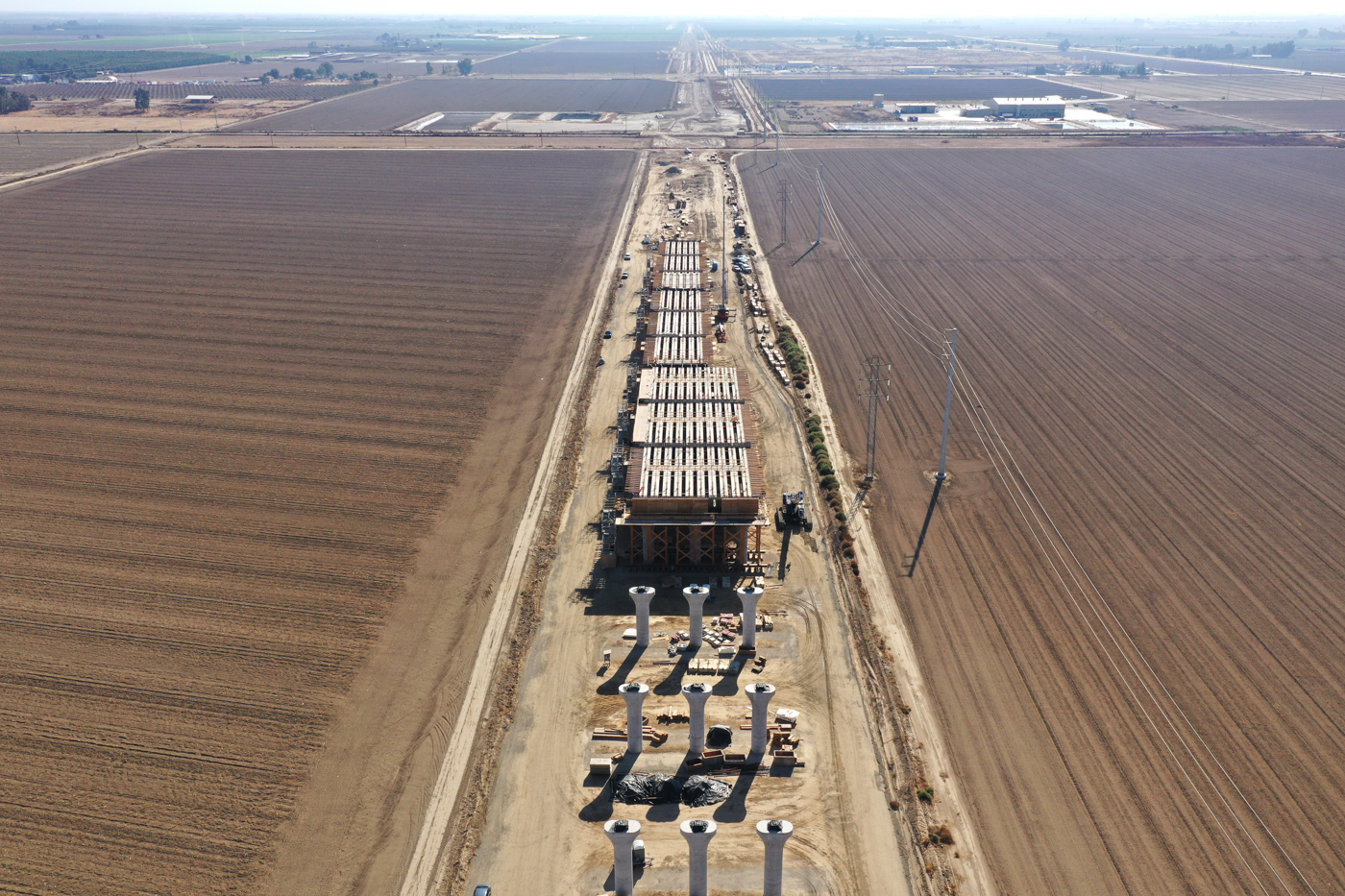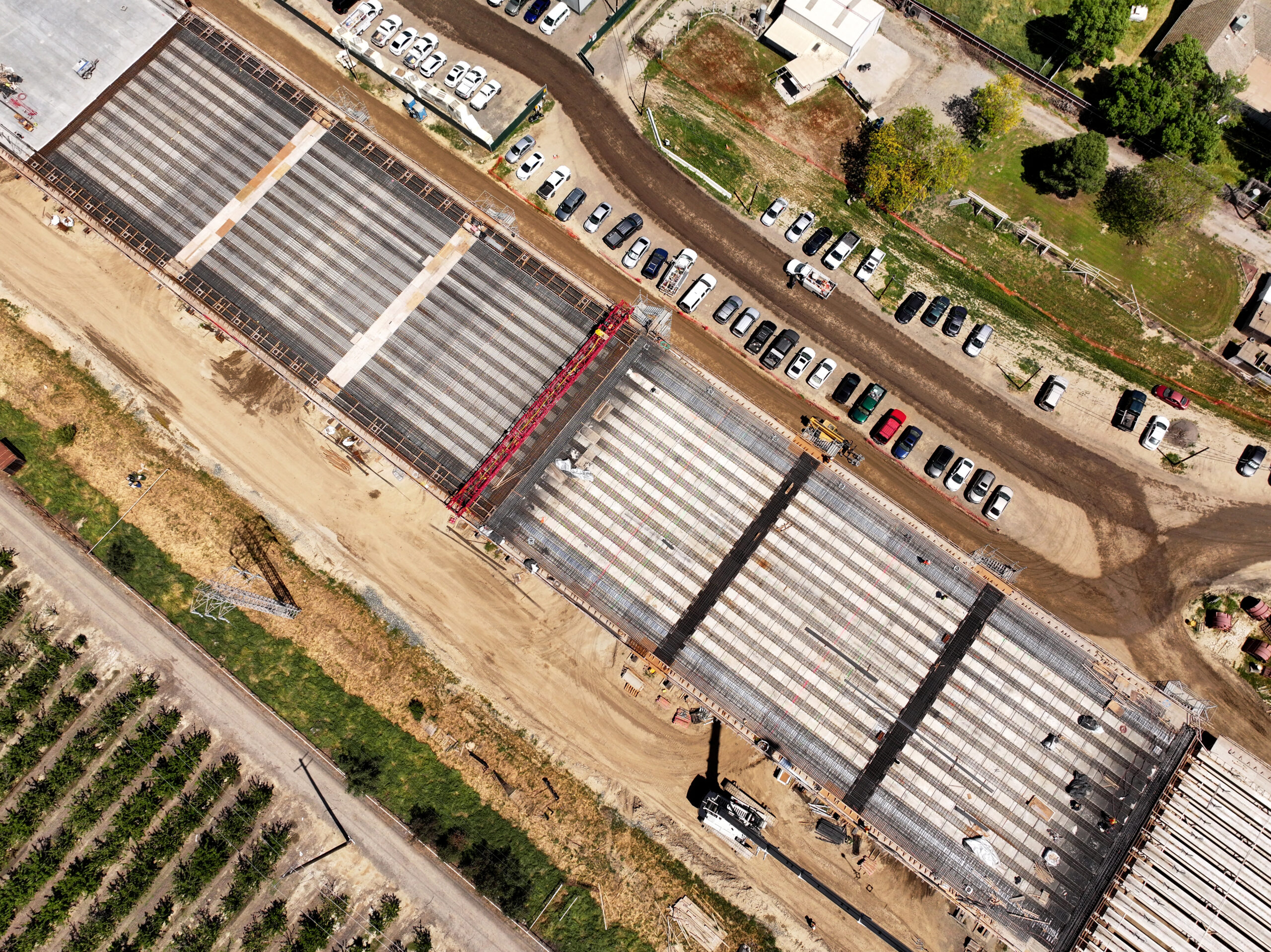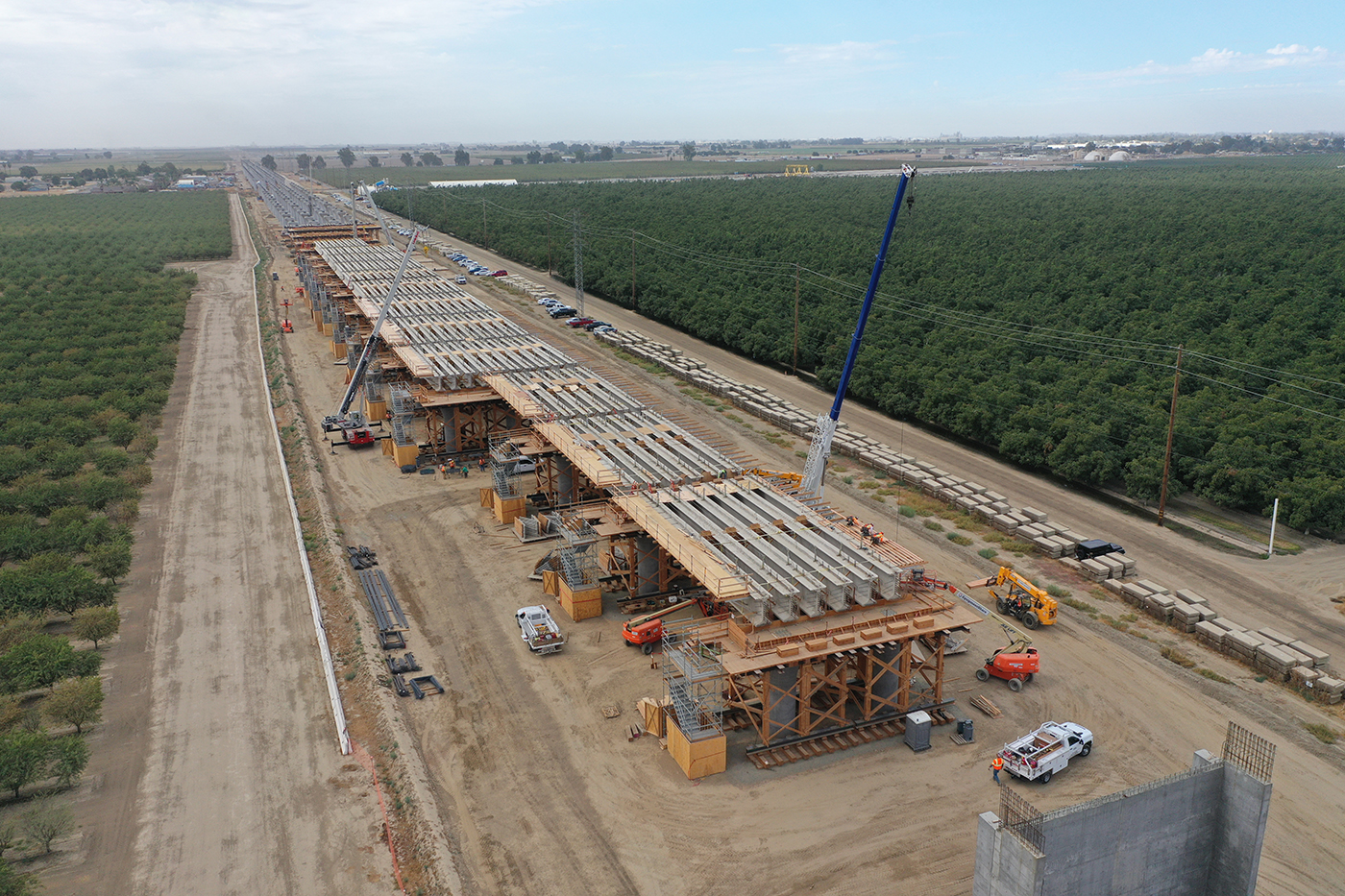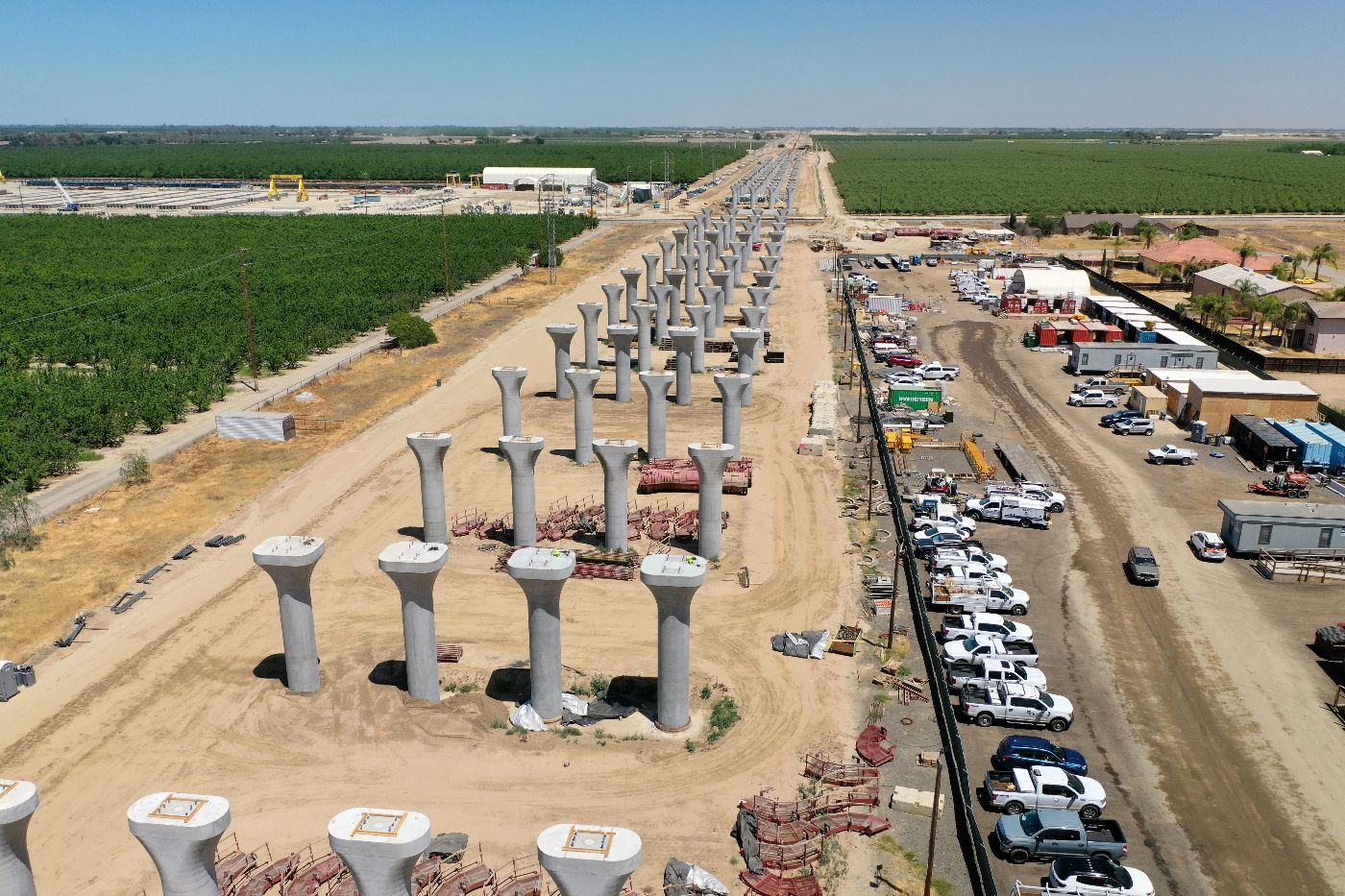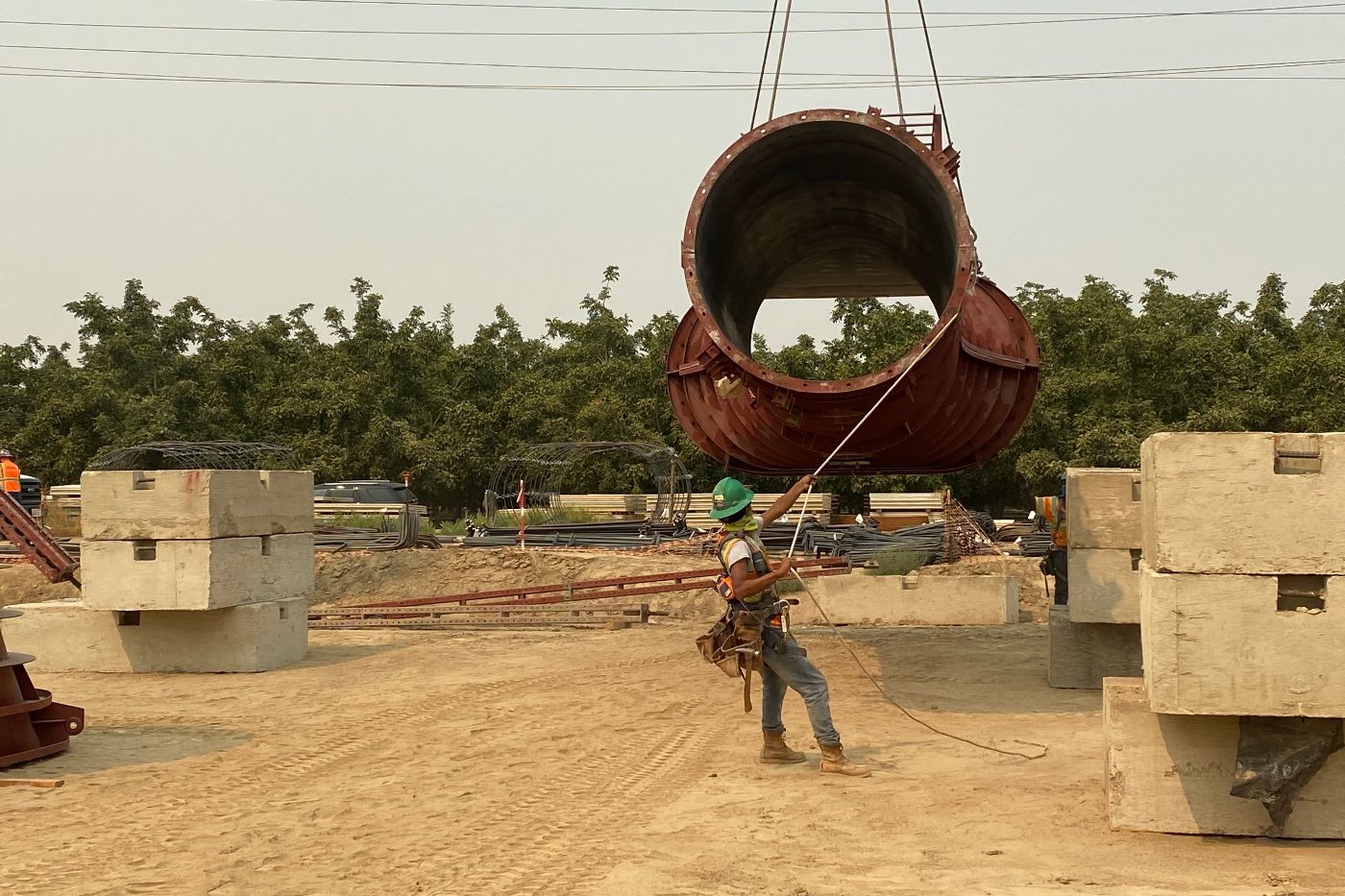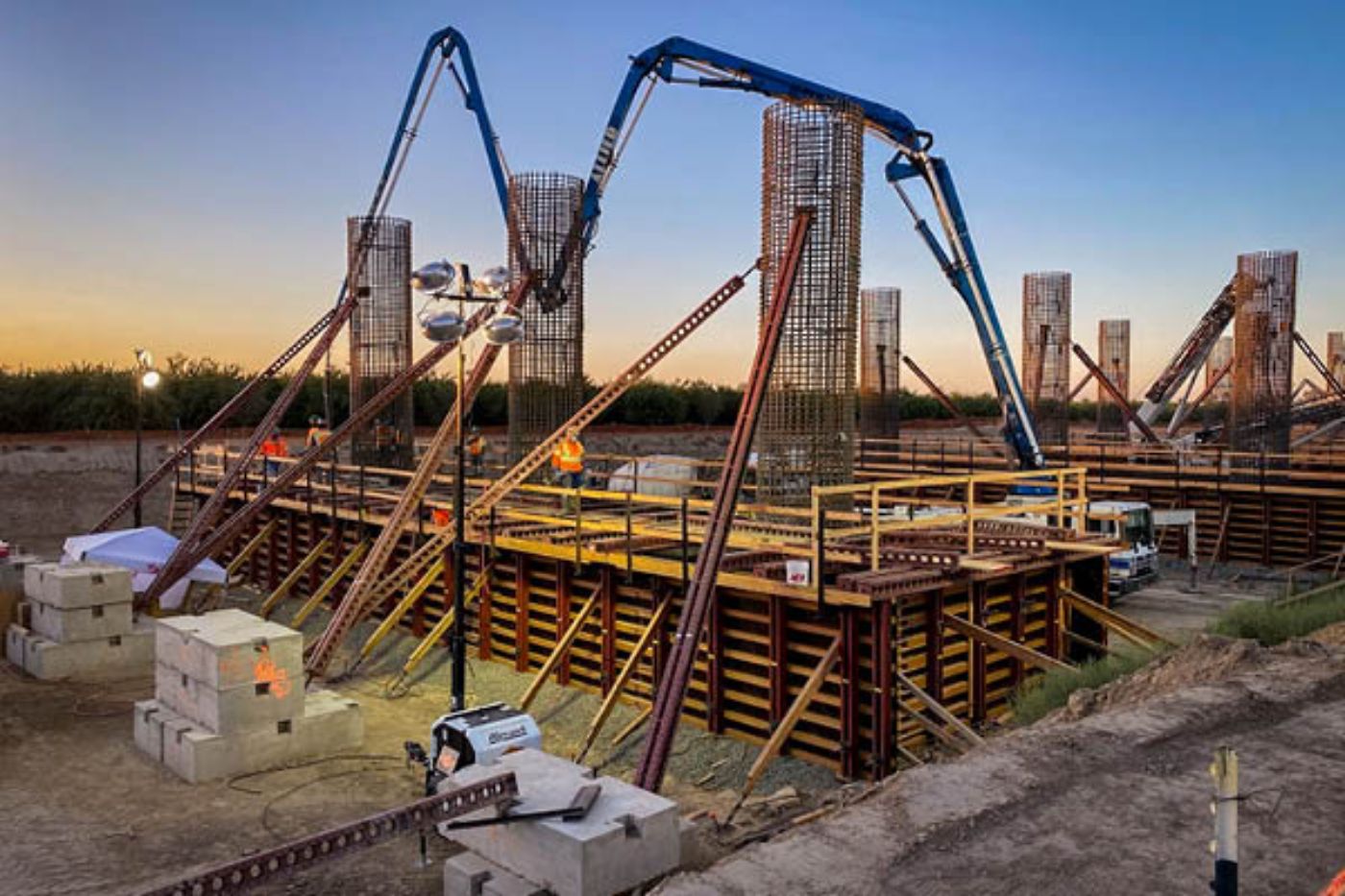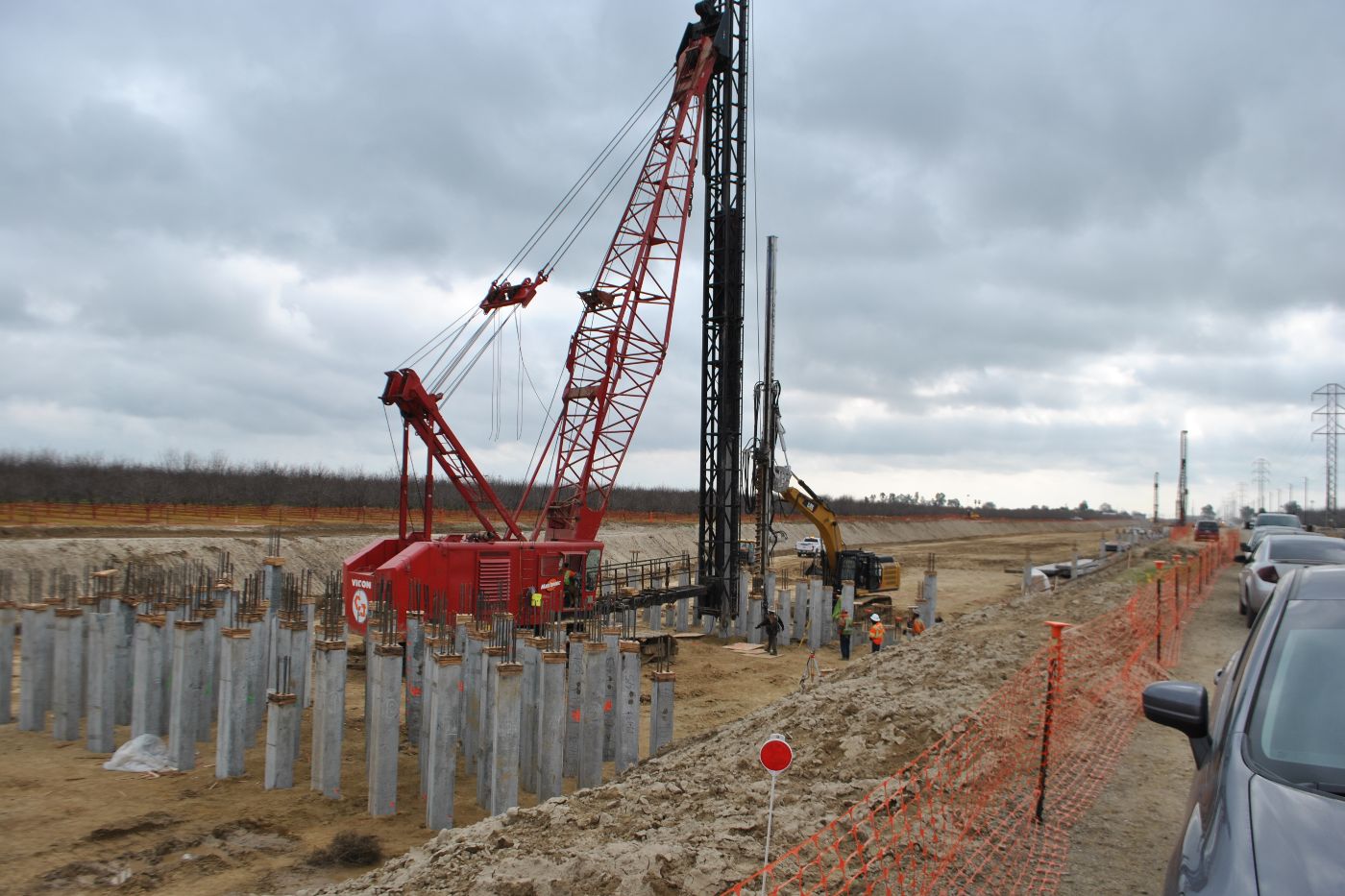To date, 284 of the 978 pre-cast concrete girders have been placed on the Hanford Viaduct. Ironworkers are working each day to tie rebar for the deck and parapet walls of the structure. Over the last few months, workers have placed concrete for the diaphragms of the structure, which bring the girders set between each span of columns together.
Hanford Viaduct is the largest high-speed rail structure in the Central Valley spanning nearly 6,330 feet long. When complete it will carry high-speed trains over San Joaquin Valley Railroad and State Route 198.
